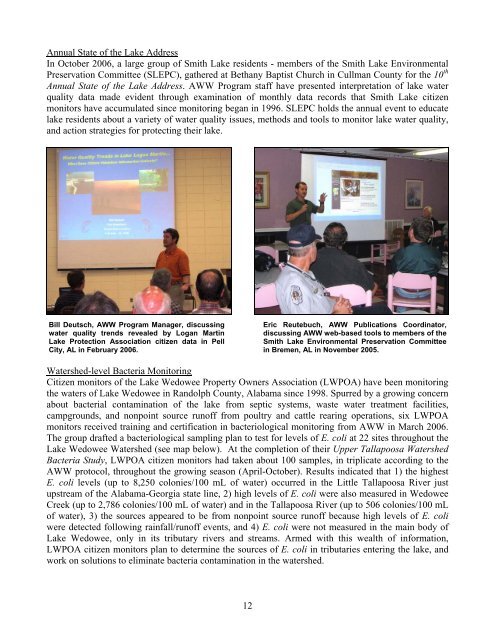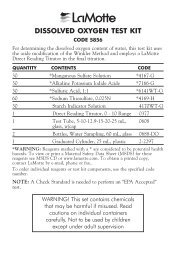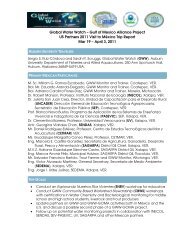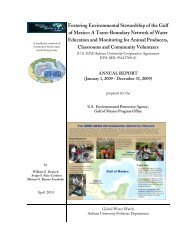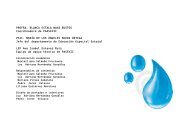Community-Based Water Quality Monitoring - Alabama Water Watch
Community-Based Water Quality Monitoring - Alabama Water Watch
Community-Based Water Quality Monitoring - Alabama Water Watch
Create successful ePaper yourself
Turn your PDF publications into a flip-book with our unique Google optimized e-Paper software.
Annual State of the Lake Address<br />
In October 2006, a large group of Smith Lake residents - members of the Smith Lake Environmental<br />
Preservation Committee (SLEPC), gathered at Bethany Baptist Church in Cullman County for the 10 th<br />
Annual State of the Lake Address. AWW Program staff have presented interpretation of lake water<br />
quality data made evident through examination of monthly data records that Smith Lake citizen<br />
monitors have accumulated since monitoring began in 1996. SLEPC holds the annual event to educate<br />
lake residents about a variety of water quality issues, methods and tools to monitor lake water quality,<br />
and action strategies for protecting their lake.<br />
Bill Deutsch, AWW Program Manager, discussing<br />
water quality trends revealed by Logan Martin<br />
Lake Protection Association citizen data in Pell<br />
City, AL in February 2006.<br />
Eric Reutebuch, AWW Publications Coordinator,<br />
discussing AWW web-based tools to members of the<br />
Smith Lake Environmental Preservation Committee<br />
in Bremen, AL in November 2005.<br />
<strong>Water</strong>shed-level Bacteria <strong>Monitoring</strong><br />
Citizen monitors of the Lake Wedowee Property Owners Association (LWPOA) have been monitoring<br />
the waters of Lake Wedowee in Randolph County, <strong>Alabama</strong> since 1998. Spurred by a growing concern<br />
about bacterial contamination of the lake from septic systems, waste water treatment facilities,<br />
campgrounds, and nonpoint source runoff from poultry and cattle rearing operations, six LWPOA<br />
monitors received training and certification in bacteriological monitoring from AWW in March 2006.<br />
The group drafted a bacteriological sampling plan to test for levels of E. coli at 22 sites throughout the<br />
Lake Wedowee <strong>Water</strong>shed (see map below). At the completion of their Upper Tallapoosa <strong>Water</strong>shed<br />
Bacteria Study, LWPOA citizen monitors had taken about 100 samples, in triplicate according to the<br />
AWW protocol, throughout the growing season (April-October). Results indicated that 1) the highest<br />
E. coli levels (up to 8,250 colonies/100 mL of water) occurred in the Little Tallapoosa River just<br />
upstream of the <strong>Alabama</strong>-Georgia state line, 2) high levels of E. coli were also measured in Wedowee<br />
Creek (up to 2,786 colonies/100 mL of water) and in the Tallapoosa River (up to 506 colonies/100 mL<br />
of water), 3) the sources appeared to be from nonpoint source runoff because high levels of E. coli<br />
were detected following rainfall/runoff events, and 4) E. coli were not measured in the main body of<br />
Lake Wedowee, only in its tributary rivers and streams. Armed with this wealth of information,<br />
LWPOA citizen monitors plan to determine the sources of E. coli in tributaries entering the lake, and<br />
work on solutions to eliminate bacteria contamination in the watershed.<br />
12


